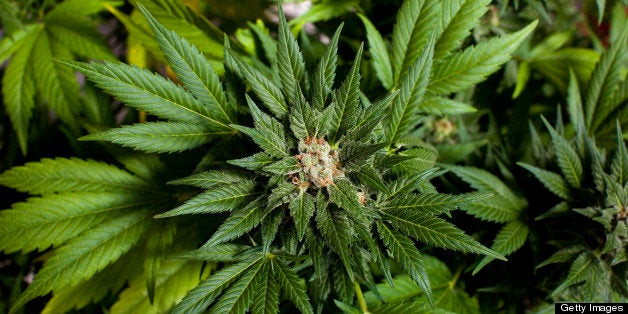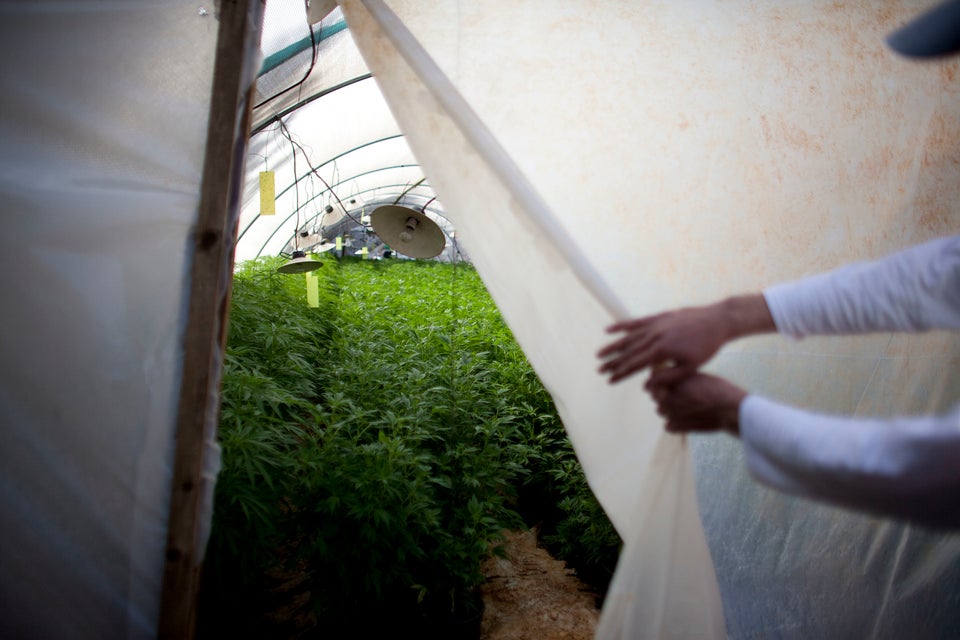
Of the folk mysteries lo these past 20 years or so has been: Why is Cannabis smoking identified with the secret number 420?
Once, when I was young, I invested time looking for answers in the Hebrew Bible and mystical tradition. Because I was promised there'd be all kinds of stuff in there.
There was a lot of buzz that year about Gematria, the ancient Hebrew numerological science that allowed the true nature of a thing to be known from the letters of its name transposed into corresponding numbers.
It's strange and often embarrassing the role and history of numerology in mysticsms. Where gnostic or platonic concepts, speculations and experiences will describe some inherent nature of meaning in signs, patterns and other cyphers, the idea that numbers are inherent and meaningful is extended to the letters of the words that we use as people. Even as far back in the Greek tradition as Pythagoras, this method would extrapolate from the numeric value of a letter -- Alpha being 1, Beta as 2 -- an expression of logical rational calculation for the sake of prophesy and soothsaying. It's not clear how much the early Greek thinkers took from the early Hebrew models, or vice versa, although the sacramentalization of the letters does seem more Phoenician/Semetic -- if not downright Solomonic.
It's stupid, but it's fun. Try it! Take a word and turn it into its numeric transpose, like this: If "A" is 1 and "B" is 2, then "J" would be 10, "K" is 20, "L" is 30, etc. Let's say: P = 70, I = 9, G = 7, so "Pig" = 86. Cute right? Probably meaningless, but it could be fun, just for novelty's sake, to look at what else is 86.
Many theories have emerged about the origins of 420: Victor Cypert's identification of an early 4:20 reference in H.P. Lovecraft's short horror story "The Walls of Erix" about a mirage plant that affects the senses in a visionary fashion, but only within a moment's time, so that when narrator looks back at the clock, he sees that it's STILL just 4:20 -- an experience very familiar to many cannabis users. This trumps the reigning theory, the High Times-endorsed claim of "The Waldos" a band in the '60s who used to sneak out from school at 4:15, arriving at the rendezvous toke spot at 4:20.
But both of these theories ignore how much the early versions of the meme aren't "4:20" like the time of day or year (Happy April 20! Cough!), but "420" as one whole august body. What's the oldest source we have for "420"? I used to like the idea that it was connected to that Bob Dylan song, "Rainy Day Woman 12 & 35," where it was proclaimed that everyone MUST get stoned. But surely there's something older and deeper, no?
Naturally, the Hebrew word for "smoke" -- AShaN (עשן) -- equals 420 in the Gematria system: ע=70, ש= 300, נ=50. This goes back to the earliest Canaanite uses of the word, at least 5,000 years. Four-twenty also corresponds to Mitzrayim (מצרים), "Out from Egypt/Constriction," which led old mystics to speculate on the nature of smoke itself as a tool toward liberation, something that breaks solid, trapped objects out of their constrictions and limitations, to dissolve into the sky. This is an eloquent description, coincidentally or not, of exactly the virtue and concern with cannabis: it breaks down walls.
On the one hand, this is terrifying, or at least frustrating, for anyone who would be dependent on a marijuana smoker to identify with their tasks and value their identity: The nature of marijuana might just be to dissolve attachments and burn away layers of identification and assumption, the most salient part of the short term memory loss being the overcoming of that sense of what one should be doing or thinking.
On the other hand, that's the exact therapeutic virtue of the ganja: overcoming trauma, breaking down cancers, and the digestion of food and abstract concepts, wearing away the layers of whatever it was that was overwhelming us. That's why it's popular, and so appreciated in an overwrought, ambition-driven civilization. How precious are tools to do that, occasions and times to collectively celebrate it!
Of course, the nature of tools is damage when used irresponsibly. This concern tends to be minimized in modern cannabis culture, precisely because the propaganda against it has been so disingenuous, manipulative and biased for so long, that it can be hard for us within the weed-appreciating community to acknowledge it. Marijuana, just like exodus, higher education and ecstatic religious experience, can tend to be alienating, and only a certain amount of commitment to tasks and people back in the world of substance and tactile experience can make those priorities important beyond the natural drift of our hearts. And just like religion, whose moral center may well have been developed as an antidote to the natural human alienation of unchecked shamanic exploration and spiritual self-indulgence, the emerging and irresistible cannabis culture of our future is going to need us to take heed of our natural excesses and catch them before we become embarrassing and unhelpful, even to ourselves.
That said, one trick perhaps to maintaining our relationship to community and "other" while making time to get Irie might be hinted to in one of the other biblical 420 correspondences: HaShneihem (השנייהם), "The two of them." That is to say, the main secret teaching to avoid being caught up in any ecstatic activity at the expense of sensitivity to the needs of those around us is to have it be something we can share somehow. If not actively puffing with a friend or neighbor, how about at least using the weed to notice their truest need and better benefit? That was the best experience of cannabis that I had ever had -- something that helped me find enough peace not to have to run from other people's feelings and truest concerns, but be able to check in and look without fear at where they are coming from, what they might appreciate, and what they might really need.
With that we might merit and work our way toward the higher aspects of 420, Geulah Shleimah (גאולה שלמה) or "Complete redemption," where everyone is able to trust everyone else to care and care for and be cared for, and we are all able to make space for each other just to chill out, together, until the end of time. Amen Selah.
Yoseph Leib Ibn Mardachya is the author of "Cannabis Chassidis: The Ancient and Emerging Torah of Drugs" (Autonomedia Press, 2012) an epic devotional study of Cannabis and other entheogens in Judaism and its heresies throughout history, into super-modernity, in the hopes of passing on a useful counsel with regards to their use beyond "do" or "don't." He is currently working on a book about Pop Cartoon Kabbalah.
